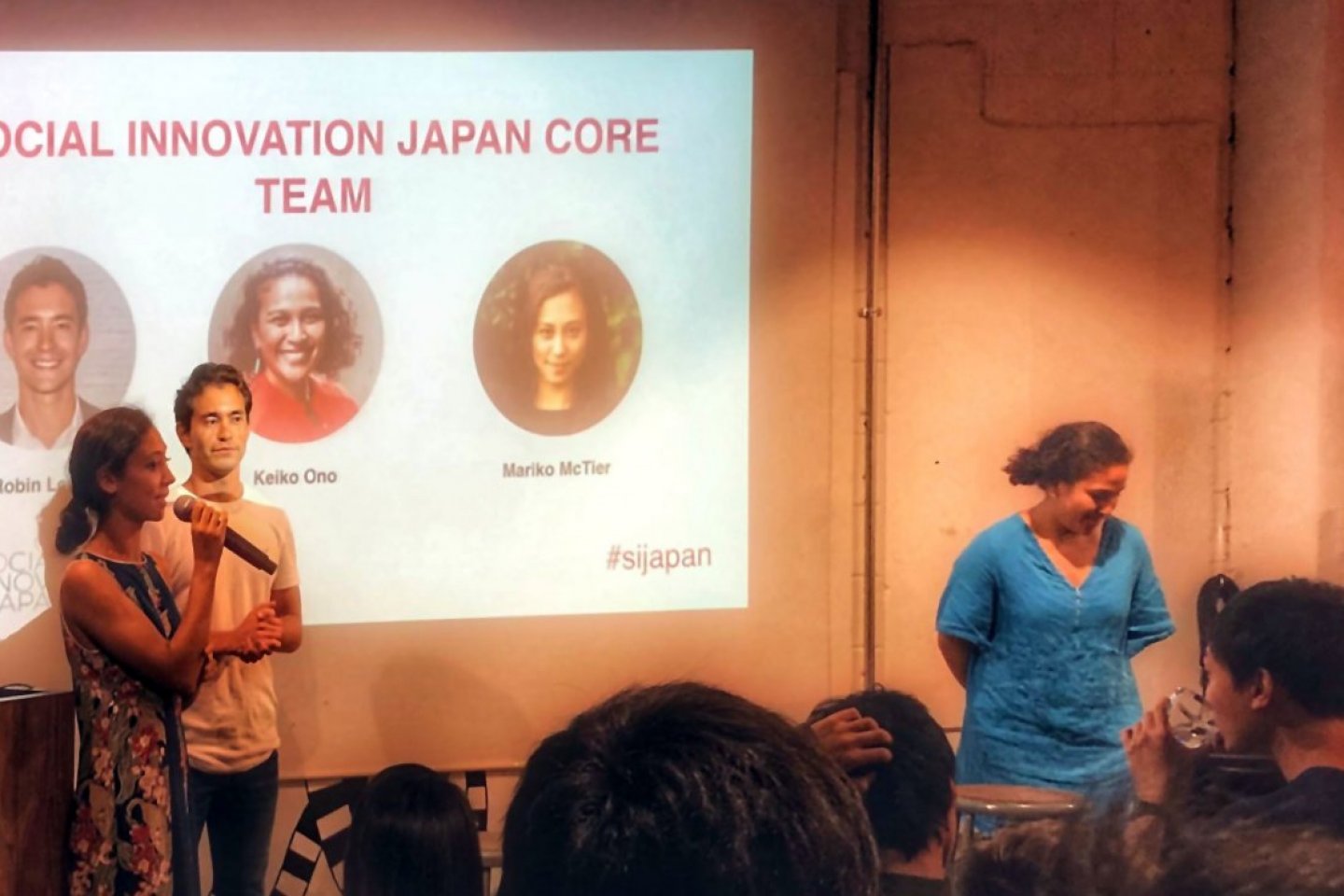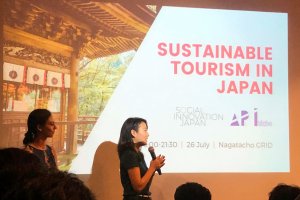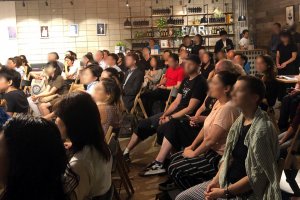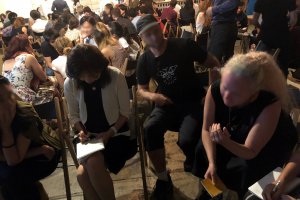This was the huge question underlying the event last night, the first time I attended Social Innovation Japan (SIJ), a group I'd known about and followed on the web for the past two years. In fact, I'd been told numerous times over the years that, "You should know Robin, or Keiko, or Mariko," each of the three founders of the group. All have been active in environmental, tech, entrepreneurial, gender, sexual identity, social justice, multicultural Tokyo, educational, and other activist circles for many years, which had placed us in the "kindred spirits" space for years. But we'd never met, until last night.

Tokyo's most well known international organic urban farmer and Johnny Appleseed, Jon Walsh, introduced Robin Lewis and me formally online around a year ago. But entropy kept our paths from intersecting until last night. Fortunately, though, the subject of last night's event and one of the night's speakers, was sufficient reason for me to be determined to go, despite knowing that it would be the fourth night in five that I would be out until late. I didn't go out this frequently, ever - not even when I was 21 years old!


Like the events of this past week, though, I was not to be disappointed. The night was co-hosted with SIJ by the Asia Pacific Initiative, or API. They invited four speakers and panelists to participate: (1) Fumiko Kato, Founder & CEO of WAmazing, (2) Yu Aoki, Founder & CEO of MATCHA, (3) Tomotsugu Yamakawa, CEO of CORARE ARTISANS JAPAN Inc., and (4) Dennis Chia, Founder & CEO of BOUNDLESS. I knew of three of the four speakers, but I had met the last speaker, Dennis, and knew a part of his story. I wanted very much to see him again, as his name was on my list of people to reacquaint with as soon as possible. This seemed like fate.

During the course of the evening, I was not disappointed. I won't go into detail on any of the presentations. But one of the evening's programs was a breakout session, in which we talked in smaller groups about how tourism would be different if it were sustainable. In 10 years time, if tourism in Japan were sustainable, would we describe tourism differently? What words would we use to describe it? My response was fairly easy. In a word, it's "Hope."


It's fitting, somewhat, that the pink post-it note that I wrote the word "HOPE" on, is curled down and you can't see it. Because in the countryside, where the sustainable aspects of tourism should be vital sources of sustenance, hope is being turned down and people are bowing to the pressures of urbanization and contemporary globalization. I know this most clearly when I go to the countryside, or speak to the mostly elderly craftspeople.
Pretty much everyone there says something similar, that they are disappointed that xyz is dying, that there is so much good that everyone is missing. Then, as if in passing, they say, "You know, my grandson just got into Kyoto University. I’m so proud of him. My granddaughter is now married to someone who works for NEC (or Google) and lives in Tokyo. I miss her, but I'm happy for her." Then, suddenly, it's obvious that their humble and generous life is great for other people, but for their children, hope is in Tokyo, Osaka, Sendai, and Matsuyama, not in the countryside. That's not hope.
I wonder where are all the bicycles. I think. "Where's the dancing, music, film, art, and parties? Where are the 'gaijin,' sleeping on the beach and playing reggae music until dawn? And where are the anisongs and the cosplayers picking veggies on the farm?" I see a world in which there are these things, with organic farms and tree houses, with old people showing kids where to get the best wild mushrooms, with downhill cycle trails where responsible forestry has tended to the trees and revived the old samurai trails, with football fields and basketball courts everywhere, with old farmhouses converted into music & film studios and all night coffeehouses, where young and old and foreign and local people gather and fix flat tires and care for each other - that's what I see clearly when I visit the outer reaches of Shikoku, Kagoshima, Tottori and Miyagi. To me, that's hope.
It's the ultimate opportunity I see in Sustainable Tourism. If a foreign visitor spends a week or month or year there "somewhere", after twenty or fifty or a hundred visitors, one of them is going to choose to live there. After 20 or 30 people from around the world choose that place, a couple of young urban wannabee Japanese millennial hippies will go to live there, too. That's hope.
It's a world I see already happening. In Shikoku. I am fairly certain that's why Dennis lives part of his time in Shikoku. It's why CarStay is opening an office in Tokushima. It's why I want to film Kokoro no Kintsugi, too. I know that most people can't see it yet. But I do.
The locals are unhappy that their communities are aging and might disappear. Still, they encourage their own offspring to abandon their ship.
We are, instead, setting our sails straight towards the promised land - Shikoku. Come HOPE with us.




























I chose to settle in northern Chiba Prefecture, far from Ehime Prefecture. Here, it's a rapidly urbanizing landscape, but with a lot of vestiges of old culture and history. I do my best to encourage people to explore, take time, and perhaps get connected with local community.
Keep going! Ganbatte kudasai!